📚 Unlock the World of AI and Humanity with These Two Free Books! 🚀
Dive into the thrilling realms of artificial intelligence and humanity with "The ECHO Conundrum" and "Awakening: Machines Dream of Being Human". These thought-provoking novels are FREE this week! Don't miss the chance to explore stories that challenge the boundaries of technology and what it means to be human.
Read More & Download
 alt: A visual representation of the interconnected elements of Lean Management
alt: A visual representation of the interconnected elements of Lean Management
Introduction to Lean Management: Enhancing Efficiency and Value
In today’s dynamic and competitive business landscape, organizations are constantly seeking ways to enhance efficiency, optimize resources, and maximize value for their customers. Lean Management, a proven management philosophy pioneered by the Kaizen Institute, offers a powerful framework to achieve these goals. By systematically eliminating waste and streamlining processes, Lean Management empowers businesses to achieve operational excellence and thrive in the face of evolving market demands. This comprehensive guide delves into the core principles, tools, benefits, and implementation strategies of Lean Management, providing valuable insights for organizations seeking to optimize their operations and achieve sustainable growth.
Defining Lean Management: A Customer-Centric Approach to Process Improvement
Lean Management, often referred to as simply “Lean,” is a systematic methodology focused on identifying and eliminating waste across all facets of an organization. It’s not just about cutting costs; it’s about maximizing value creation for the customer by optimizing resources and improving quality, lead times, and overall efficiency. Lean encourages continuous improvement and fosters a culture of employee involvement at all levels, from frontline workers to executive leadership.
The Genesis of Lean Management: From Toyota’s Production System to Global Adoption
The Toyota Production System: The Foundation of Lean
The roots of Lean Management can be traced back to the Toyota Production System (TPS), developed by Taiichi Ohno and Eiji Toyoda in the post-World War II era. Facing resource constraints and intense competition, Toyota devised the TPS to eliminate waste and maximize efficiency in its automobile manufacturing processes. Key principles of the TPS, such as Just-In-Time (JIT) and autonomation (automation with a human touch), revolutionized production by minimizing inventory and aligning production with actual demand. This innovative system propelled Toyota to become a global leader in the automotive industry.
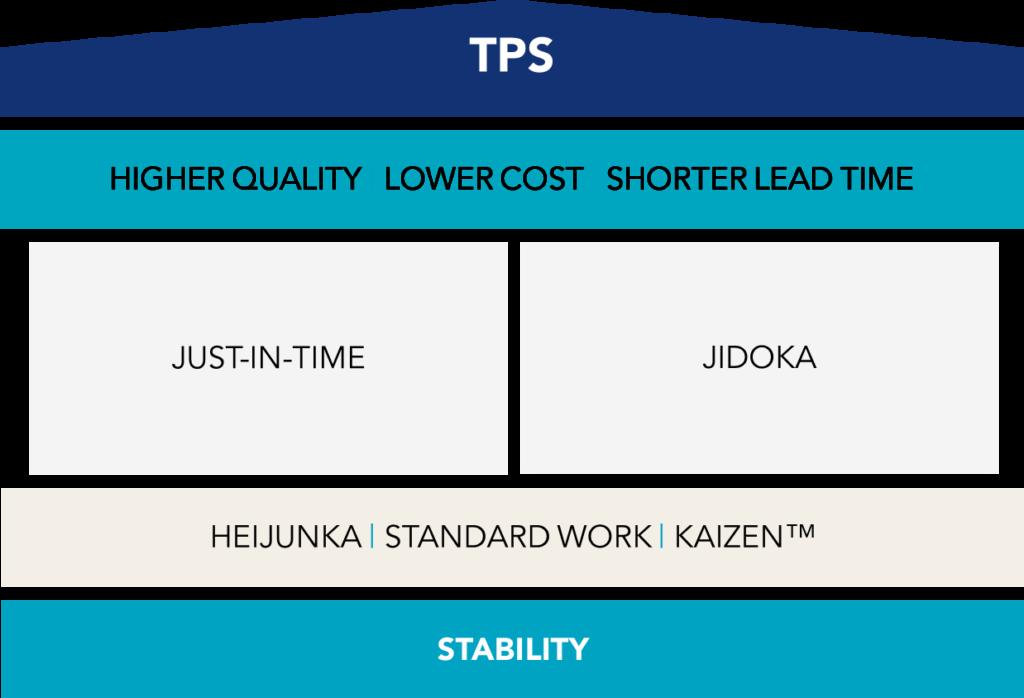 alt: A diagram illustrating the core components of the Toyota Production System (TPS)
alt: A diagram illustrating the core components of the Toyota Production System (TPS)
The Evolution and Expansion of Lean
Over the decades, Lean Management has transcended its automotive origins and has been successfully implemented across diverse industries, including healthcare, technology, and services. This expansion has led to the integration of new tools and practices, such as Lean Six Sigma, which combines Lean’s focus on waste reduction with Six Sigma’s emphasis on statistical process control. Today, Lean Management is recognized as a holistic management philosophy applicable to any organization seeking to optimize performance and achieve sustainable growth.
The Importance of Lean Management in the Modern Business Environment
In today’s rapidly changing business environment, agility and efficiency are paramount to success. Lean Management provides organizations with the tools and strategies to respond effectively to evolving customer needs, enhance product and service quality, and reduce operational costs. By fostering a culture of employee engagement and empowerment, Lean also promotes innovation and collaboration, crucial elements for long-term sustainability and competitiveness.
The Five Foundational Principles of Lean Management
Lean Management is built upon five core principles that guide organizations in their pursuit of efficiency, continuous improvement, and customer value maximization.
1. Value Identification: Understanding Customer Needs
The first principle emphasizes a deep understanding of what constitutes value from the customer’s perspective. This involves analyzing customer needs and expectations to ensure that all activities align with delivering true value.
2. Value Stream Mapping: Visualizing the Flow of Value
Value stream mapping involves visually representing all the processes involved in creating and delivering a product or service. This mapping helps identify non-value-added activities (waste) and provides a clear picture of the entire value stream, enabling targeted improvements.
3. Creating Continuous Flow: Eliminating Bottlenecks and Delays
The third principle focuses on creating a smooth and uninterrupted flow of work. By eliminating bottlenecks, delays, and interruptions, organizations can reduce lead times, improve flexibility, and enhance responsiveness to customer demand.
4. Implementing a Pull System: Producing Based on Demand
Lean Management advocates for a pull system, where production is initiated by customer demand rather than forecasts. This minimizes inventory, reduces waste, and ensures that resources are utilized efficiently.
5. Striving for Perfection: Continuous Improvement
The pursuit of perfection is the cornerstone of Lean thinking. It emphasizes the ongoing effort to improve processes, products, and services. By fostering a culture of continuous improvement, organizations can adapt to changing market dynamics and maintain a competitive edge.
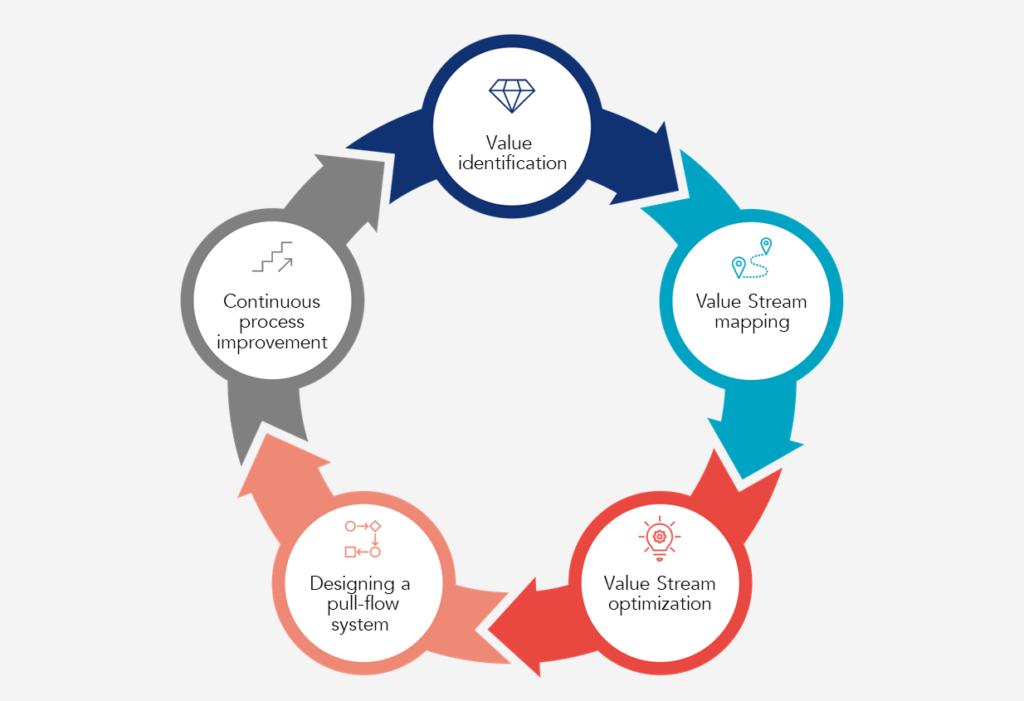 alt: A circular diagram illustrating the five interconnected principles of Lean Management
alt: A circular diagram illustrating the five interconnected principles of Lean Management
Essential Tools and Techniques of Lean Management
Lean Management utilizes a variety of tools and techniques to support the implementation of its core principles.
Six Sigma: Reducing Variation and Defects
Six Sigma is a data-driven methodology focused on reducing process variation and eliminating defects. When combined with Lean, it creates a powerful approach known as Lean Six Sigma, which accelerates performance improvement.
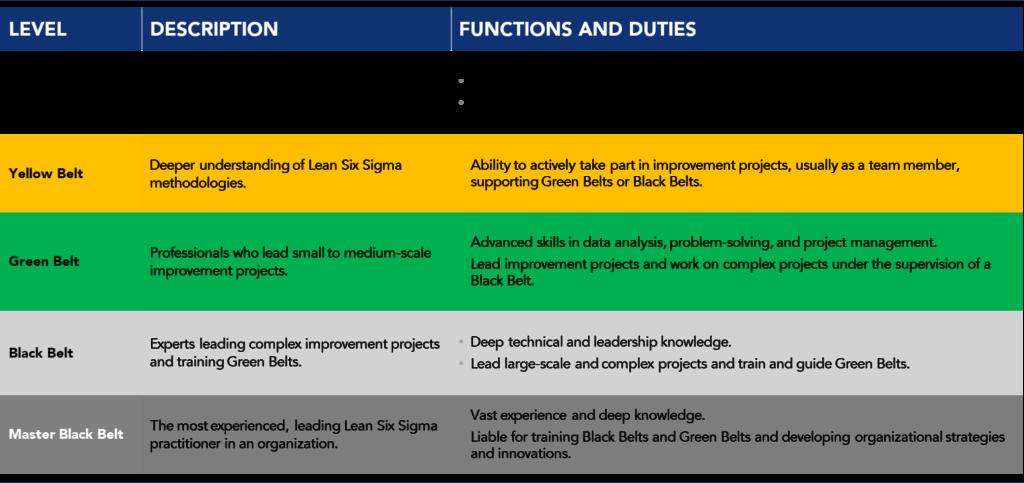 alt: A chart outlining the different belt levels in Lean Six Sigma, indicating increasing expertise
alt: A chart outlining the different belt levels in Lean Six Sigma, indicating increasing expertise
📚 Unlock the World of AI and Humanity with These Two Free Books! 🚀
Dive into the thrilling realms of artificial intelligence and humanity with "The ECHO Conundrum" and "Awakening: Machines Dream of Being Human". These thought-provoking novels are
FREE this week! Don't miss the chance to explore stories that challenge the boundaries of technology and what it means to be human. Read More & Download
5S: Organizing the Workplace for Efficiency
The 5S methodology (Sort, Set in Order, Shine, Standardize, Sustain) provides a structured approach to workplace organization, improving efficiency, safety, and productivity.
Kaizen: Continuous Improvement through Small Changes
Kaizen, meaning “change for the better,” is a core element of Lean. It encourages continuous improvement through small, incremental changes involving all employees.
SMED (Single-Minute Exchange of Die): Minimizing Changeover Times
SMED focuses on reducing setup times in manufacturing processes, enabling greater flexibility and responsiveness to customer demand.
Kanban: Visualizing and Managing Workflow
Kanban is a visual system for managing workflow and controlling work-in-progress, helping to prevent overproduction and minimize inventory.
Other Key Lean Tools
- Just-In-Time (JIT): Producing and delivering only what is needed, when it’s needed.
- Gemba: Going to the actual workplace to observe and understand processes.
- Poka-Yoke: Error-proofing systems to prevent defects.
- Value Stream Mapping (VSM): Visualizing the flow of materials and information.
- Muda: Identifying and eliminating the seven types of waste.
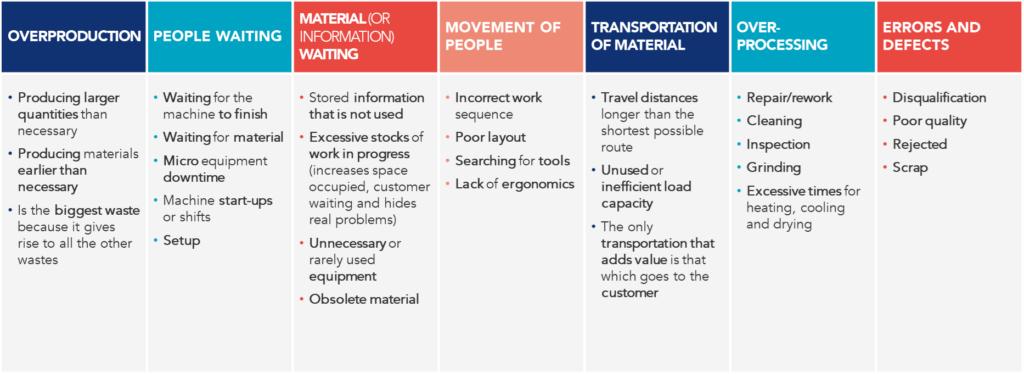 alt: A table detailing the seven types of Muda (waste) in Lean Management, providing examples and explanations for each
alt: A table detailing the seven types of Muda (waste) in Lean Management, providing examples and explanations for each
Lean Manufacturing Management: Optimizing Production Processes
Lean Manufacturing applies Lean principles to the manufacturing sector, aiming to improve efficiency, reduce costs, and enhance quality. By focusing on value creation for the customer, Lean Manufacturing streamlines production processes, minimizes waste, and enhances responsiveness to market demands. The integration of modern technologies, such as automation, IoT, and AI, further enhances the effectiveness of Lean Manufacturing.
The Objectives and Benefits of Lean Management
Lean Management offers a wide range of benefits that positively impact various aspects of an organization.
Improved Efficiency: Streamlining Operations
Lean drives significant improvements in operational efficiency by eliminating waste and streamlining processes.
Cost Reduction: Minimizing Waste
By targeting and eliminating waste, Lean Management helps organizations reduce costs and improve profitability.
Enhanced Customer Satisfaction: Delivering Value
Lean’s customer-centric approach leads to improved product and service quality, faster delivery times, and increased customer satisfaction.
Improved Quality: Eliminating Defects
By focusing on process improvement and error prevention, Lean leads to higher quality products and services.
Positive Corporate Culture: Fostering Collaboration
Lean Management fosters a culture of collaboration, empowerment, and continuous improvement, leading to increased employee engagement and motivation.
Training and Development in Lean Management
Successful Lean implementation requires continuous training and development to build a strong Lean culture within the organization. The Kaizen Institute offers comprehensive training programs covering various aspects of Lean Management, including Lean principles, tools, and Lean Six Sigma methodologies. These programs equip professionals with the skills and knowledge necessary to drive Lean initiatives and achieve operational excellence.
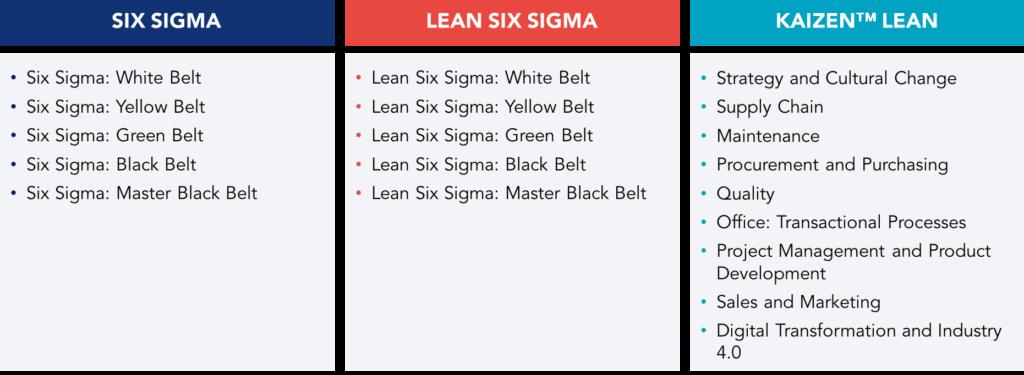 alt: A promotional image showcasing various training programs offered by the Kaizen Institute, focusing on Lean Six Sigma and other Lean methodologies
alt: A promotional image showcasing various training programs offered by the Kaizen Institute, focusing on Lean Six Sigma and other Lean methodologies
Frequently Asked Questions about Lean Management
What is the Importance of Leadership in Lean Management Success?
Strong leadership is essential for Lean implementation. Leaders must champion the Lean philosophy, foster a culture of continuous improvement, and empower their teams to identify and eliminate waste.
What is Lean Six Sigma?
Lean Six Sigma combines the principles of Lean and Six Sigma to achieve both waste reduction and process improvement through statistical analysis and problem-solving techniques.
📚 Unlock the World of AI and Humanity with These Two Free Books! 🚀
Dive into the thrilling realms of artificial intelligence and humanity with "The ECHO Conundrum" and "Awakening: Machines Dream of Being Human". These thought-provoking novels are FREE this week! Don't miss the chance to explore stories that challenge the boundaries of technology and what it means to be human.
Read More & Download

